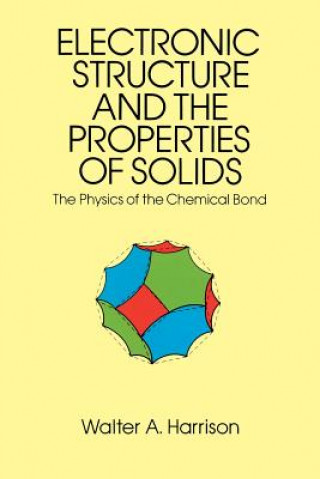
Kod: 02067968
Electronic Structures and the Properties of Solids
Autor Walter A Harrison
Part I. Electron states 1. The quantum-mechanical basis A. Quantum mechanics B. Electronic structure of atoms C. Electronic structure of small molecules D. The simple polar bond E. Diatomic molecules 2. Ele ... więcej
- Język:
 Angielski
Angielski - Oprawa: Miękka
- Liczba stron: 582
Wydawca: Dover Publications Inc., 1990
- Więcej informacji o książce

120.36 zł
Zwykle: 126.73 zł
Oszczędzasz 6.37 zł

Dostępna u dostawcy
Wysyłamy za 14 - 18 dni
Zobacz książki o podobnej tematyce
-

Magnetism and Magnetic Materials
374.72 zł -

DOT TO DOT WIPE CLEAN ACTIVITY BOOK
62.53 zł -10 % -

Nineteen Eighty-four
39.78 zł -15 % -

Chi Self-Massage
57.22 zł -5 % -

Selected Poems and Songs
52.91 zł -9 % -

Students' Awareness of Climate Change and Awareness Raising Strategies for Junior Colleges in the Emerging Megacity of Hyderabad
147.92 zł -

Between Sundays
80.47 zł -1 %
Podaruj tę książkę jeszcze dziś
- Zamów książkę i wybierz "Wyślij jako prezent".
- Natychmiast wyślemy Ci bon podarunkowy, który możesz przekazać adresatowi prezentu.
- Książka zostanie wysłana do adresata, a Ty o nic nie musisz się martwić.
Więcej informacji o Electronic Structures and the Properties of Solids
Za ten zakup dostaniesz 70 punkty
 Opis
Opis
Part I. Electron states 1. The quantum-mechanical basis A. Quantum mechanics B. Electronic structure of atoms C. Electronic structure of small molecules D. The simple polar bond E. Diatomic molecules 2. Electronic structure of solids A. Energy bands B. Electron dynamics C. Characteristic solid types D. Solid state matrix elements E. Calculation of spectra Part II. Covalent solids 3. Electronic structure of simple tetrahedral solids A. Crystal structures B. Bond orbitals C. The LCAO bands D. The bond orbital approximation and extended bond orbitals E. Metallicity F. Planar and filamentary structures 4. Optical spectra A. Dielectric susceptibility B. Optical properties and oscillator strengths C. Features of the absorption spectrum D. chi subscript 1 and the dielectric constant 5. Other dielectric properties A. Bond dipoles and higher-order susceptibilities B. Effective atomic charge C. Dielectric screening D. Ternary compounds E. Magnetic susceptibility 6. The energy bands A. Accurate band structures B. LCAO Interpretation of the bands C. The conduction bands D. Effective masses E. Impurity states and excitons 7. The total energy A. The overlap interaction B. Bond length, cohesive energy, and the bulk modulus C. Cohesion in polar covalent solids 8. Elasticity A. Total energy calculations B. Rigid hybrids C. Rehybridization D. The Valence force field E. Internal displacements, and prediction of c subscript 44 9. Lattice Vibrations A. The Vibration spectrum B. Long range forces C. Phonons and the specific heat D. The transverse charge E. Piezoelectricity F. The Electron-phonon interaction 10. Surfaces and defects A. Surface energy and crystal shapes B. Surface reconstruction C. The elimination of surface states, and Fermi level pinning D. Adsorption of atoms and the 7 x 7 reconstruction pattern E. Defects and amorphous semiconductors F. Photothresholds and heterojunctions 11. Mixed tetrahedral solids A. Tetrahedral complexes B. The crystal structure and the simple molecular lattice C. The bonding unit D. Bands and electronic spectra E. Mechanical properties F. Vibrational spectra G. Coupling of vibrations to the infrared Part III Closed-shell systems 12. Inert-gas solids A. Interatomic interactions B. Electronic properties 13. Ionic compounds A. The crystal structure B. Electrostatic energy and the Madelung potential C. Ion-Ion Interactions D. Cohesion and Mechanical Properties E. Structure Determination and Ionic Radii 14. Dielectric properties of ionic crystals A. Electronic structure and spectra B. Dielectric susceptibility C. Effective charges and ion softening D. Surfaces and molten ionic compounds Part IV Open-shell systems 15. Simple metals A. History of the theory B. The Free-electron theory of metals C. Electrostatic energy D. The empty-core pseudopotential E. Free-electron energy F. Density, bulk modulus, and cohesion 16. Electronic structure of metals A. Pseudopotential perturbation theory B. Pseudopotentials in the perfect lattice C. Electron diffraction by pseudopotentials D. Nearly-free-electron bands and Fermi surfaces E. Scattering by defects F. Screening 17. Mechanical properties of metals A. The band-structure energy B. The effective interaction between ions, and higher-order terms C. The phonon spectrum D. The electron-phonon interaction and the electron-phonon coupling constant E. Surfaces and liquids 18. Pseudopotential theory of covalent bonding A. The prediction of interatomic matrix elements B. The Jones zone gap C. Covalent and polar contributions D. Susceptibility E. Bonding properties F. Ionic bonding G. Interfaces and Heterojunctions 19. Transition-metal compounds A. d States in solids B. Monoxides: Miltiplet d States C. Perovskite structures; d Bands D. Other compounds E. The Perovskite ghost F. The chemical grip G. The electrostatic stability of Perovskites H. The electron-phonon interaction 20 Transition metals A. The bands B. The electronic properties and density of states C. Cohesion, bond length, and compressibility D. Muffin-Tin Orbitals and the Atomic Sphere Approximation E. d Resonances and transition-metal pseudopotentials F. Local moments and magnetism Appendix A. The One-electron approximation Appendix B. Nonorthogonality of basis states Appendix C. The overlap interaction Appendix D. Quantum-mechanical formulation of pseudopotentials Appendix E. Orbital corrections Solid state table of the elements Bibliography and author index Subject index
 Szczegóły książki
Szczegóły książki
Kategoria Książki po angielsku Mathematics & science Physics Applied physics
120.36 zł
- Pełny tytuł: Electronic Structures and the Properties of Solids
- Autor: Walter A Harrison
- Język:
 Angielski
Angielski - Oprawa: Miękka
- Liczba stron: 582
- EAN: 9780486660219
- ISBN: 0486660214
- ID: 02067968
- Wydawca: Dover Publications Inc.
- Waga: 773 g
- Wymiary: 234 × 156 × 30 mm
- Data wydania: 01. July 1990
Ulubione w innej kategorii
-

Astrophysics for People in a Hurry
81.07 zł -5 % -

Stellar Evolution, Nuclear Astrophysics, and Nucleogenesis
62.83 zł -4 % -

CO2 Laser Surgery
284.52 zł -

Life on the Edge
52.11 zł -15 % -

Geophysics: A Very Short Introduction
57.22 zł -5 % -

Lectures on Astrophysics
258.36 zł -
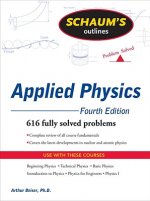
Schaum's Outline of Applied Physics, 4ed
134.89 zł -2 % -

Atlas of Antarctica
193.72 zł -19 % -

Revolutions that Made the Earth
198.13 zł -

Welcome to the Universe
164.45 zł -5 % -

Introduction to Modern Astrophysics
411.30 zł -

MoonFire
110.84 zł -

Feynman's Lost Lecture
42.48 zł -23 % -

Geology: A Complete Introduction: Teach Yourself
70.04 zł -23 % -

Black Holes: A Very Short Introduction
42.48 zł -23 % -
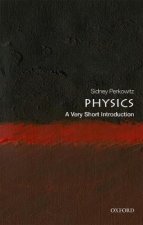
Physics: A Very Short Introduction
42.48 zł -23 % -

Our Cosmic Habitat
89.99 zł -

Origin and Nature of Life on Earth
283.52 zł -

Fundamentals of Fluorescence Microscopy
288.33 zł -

Astrophysics: A Very Short Introduction
42.48 zł -23 % -

Physics in Biology and Medicine
552.21 zł -

Fundamental Astronomy
478.75 zł -

Cosmology: A Very Short Introduction
42.48 zł -23 % -

Chasing New Horizons
131.98 zł -

Principles of Planetary Climate
428.14 zł -

Black Holes, Wormholes and Time Machines
284.52 zł -

Advances in Meteorology, Climatology and Atmospheric Physics
1457.92 zł -

Student's Guide to Special Relativity
127.77 zł -

Exoplanets
126.87 zł -

Stephen Hawking
70.04 zł -23 % -

Environmental Physiology of Animals 2e
818.80 zł -

Creation Of The Universe
185.30 zł -

Water: A Very Short Introduction
42.48 zł -23 % -

Galaxies: A Very Short Introduction
42.48 zł -23 % -

Cell Biology by the Numbers
285.52 zł -

Student's Guide to Atomic Physics
132.88 zł -

Atmosphere: A Very Short Introduction
57.22 zł -5 % -
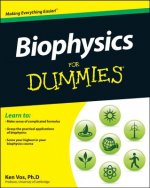
Biophysics For Dummies
93.60 zł -5 % -

Student's Manual for A First Course in General Relativity
162.95 zł -

Stars: A Very Short Introduction
57.22 zł -5 % -

First Course in General Relativity
276.70 zł -

Introduction to Cosmology
272.79 zł -

Galactic Dynamics
633.99 zł -

University Physics
157.44 zł -11 % -

Astrophysics through Computation
423.03 zł -

Exact Space-Times in Einstein's General Relativity
485.87 zł -
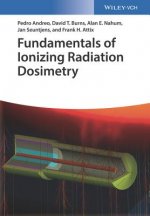
Fundamentals of Ionizing Radiation Dosimetry
837.75 zł -3 % -

Stars and Stellar Processes
398.97 zł -

Astrophysics for Physicists
414.21 zł
zadowolonych klientów
Od roku 2008 obsłużyliśmy wielu miłośników książek, ale dla nas każdy był tym wyjątkowym.
Copyright! ©2008-24 libristo.pl Wszelkie prawa zastrzeżonePrywatnieCookies


 21 milionów książek
21 milionów książek Dostawa 10.99 zł
Dostawa 10.99 zł (32) 444 93 66 (8-15.30h)
(32) 444 93 66 (8-15.30h)